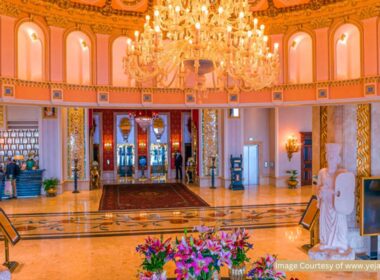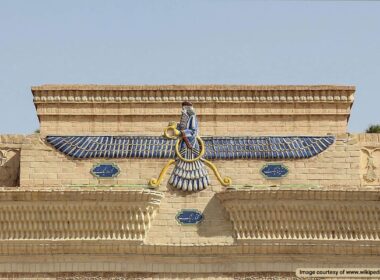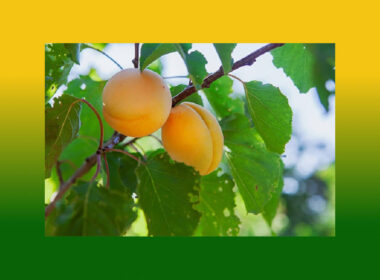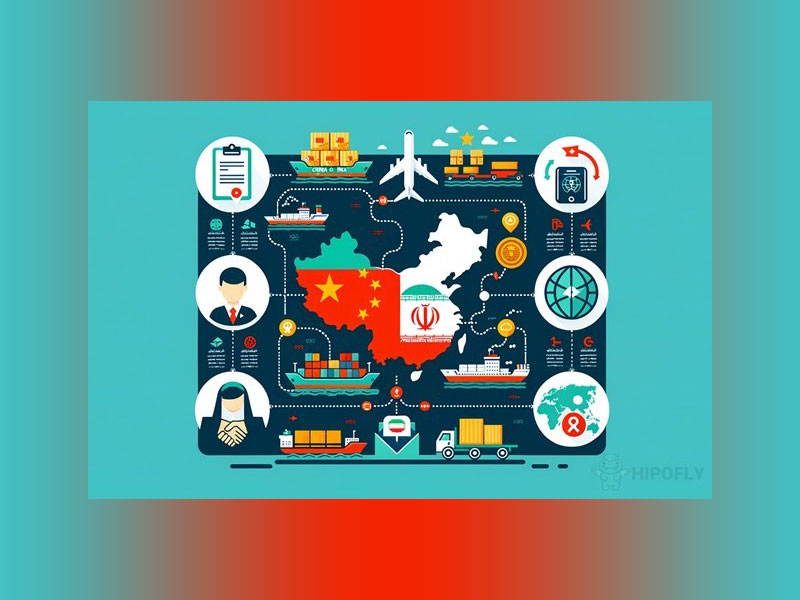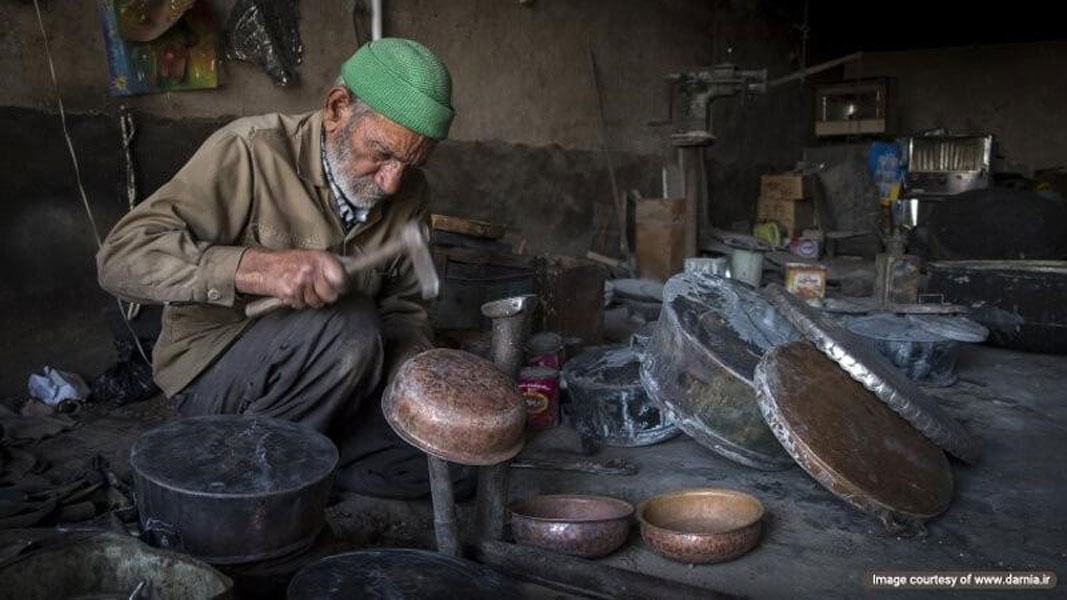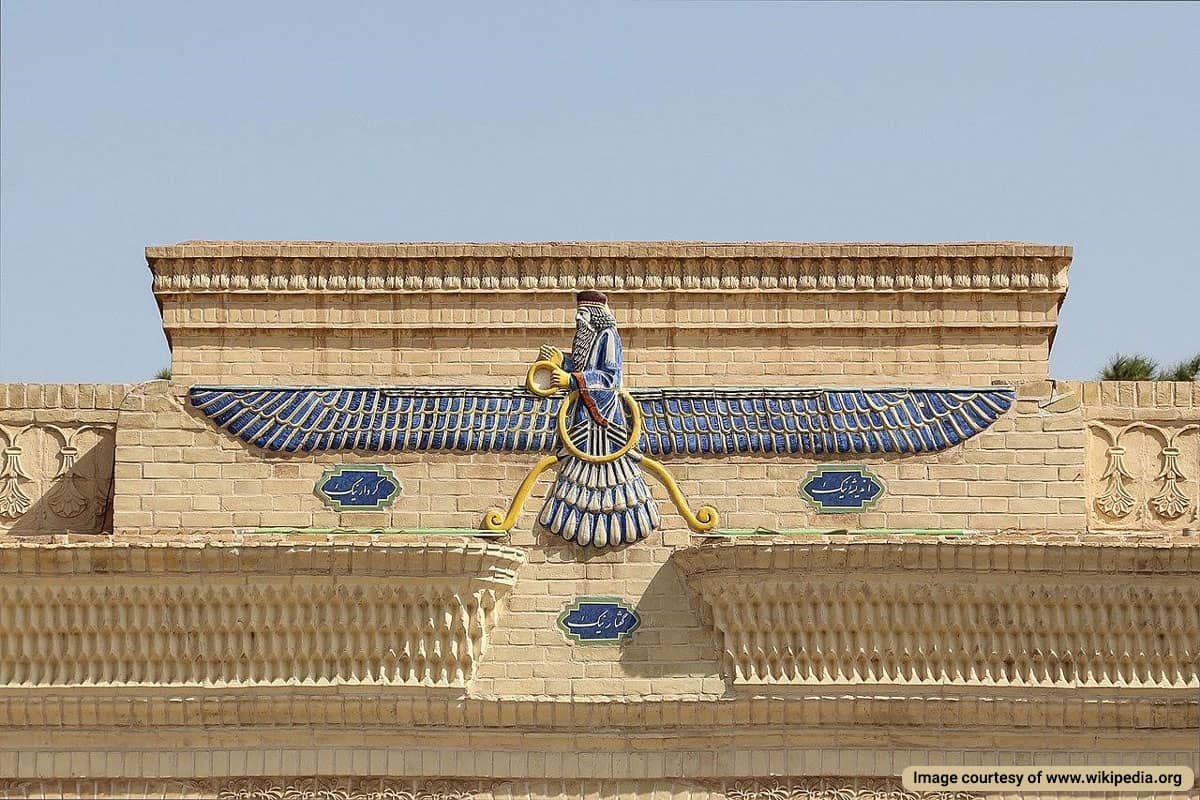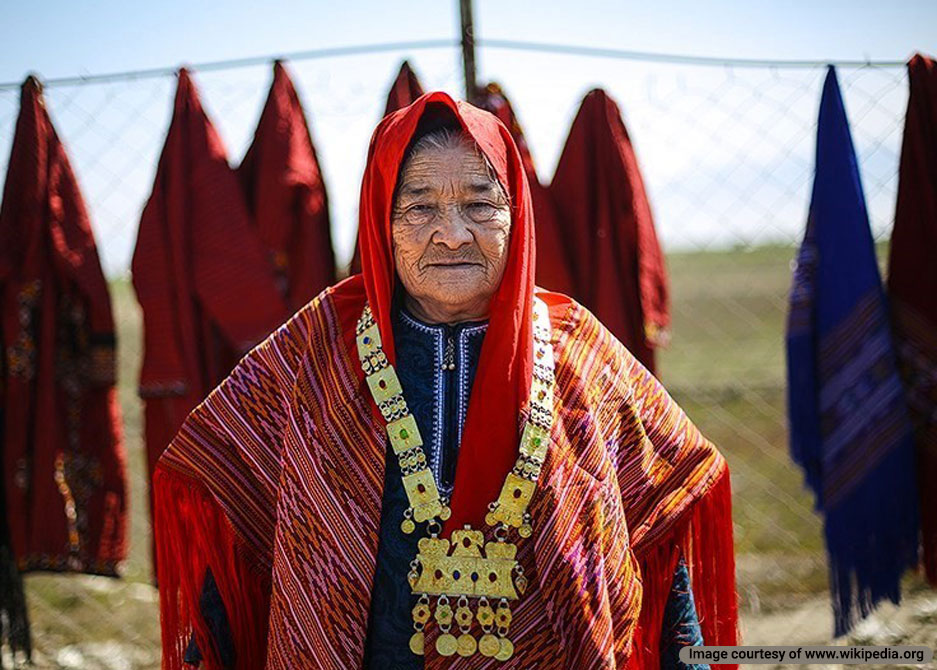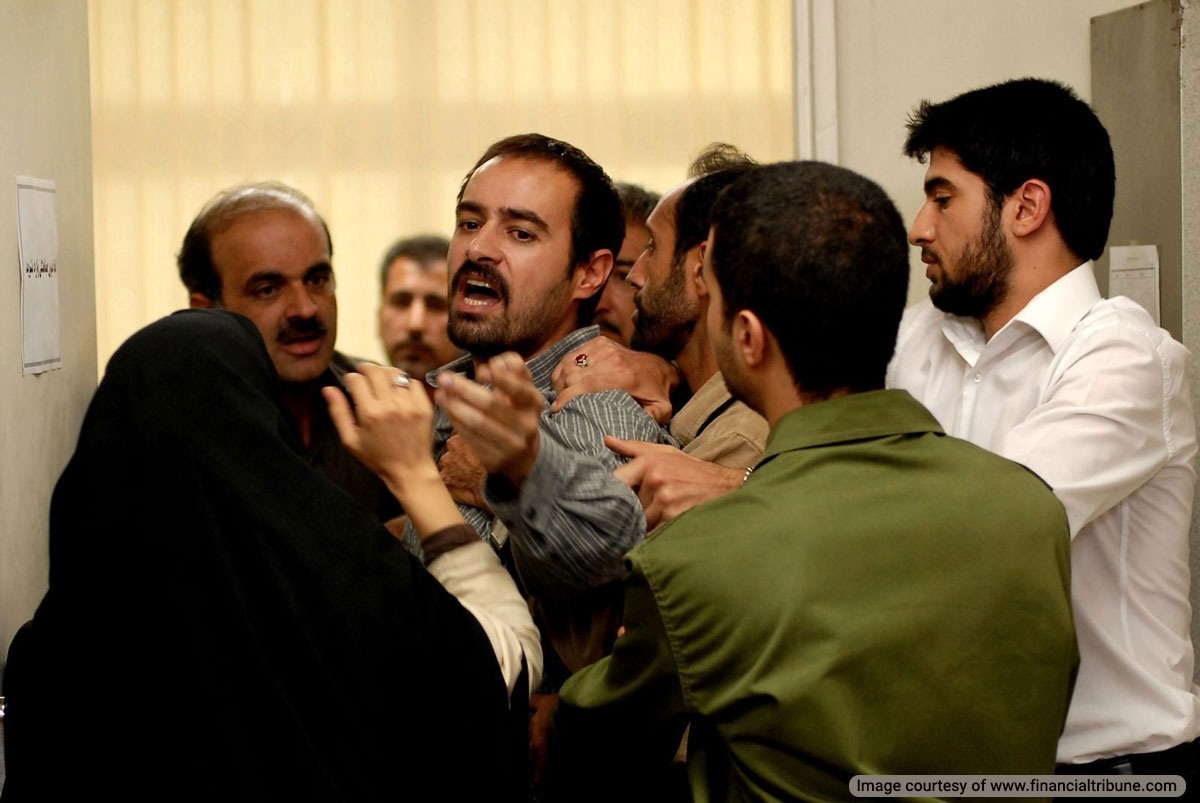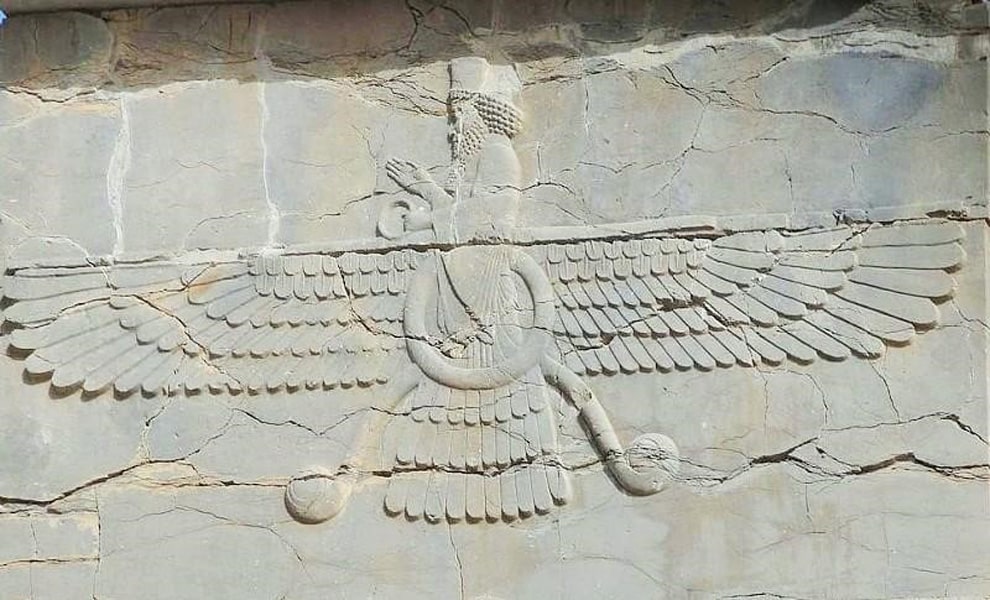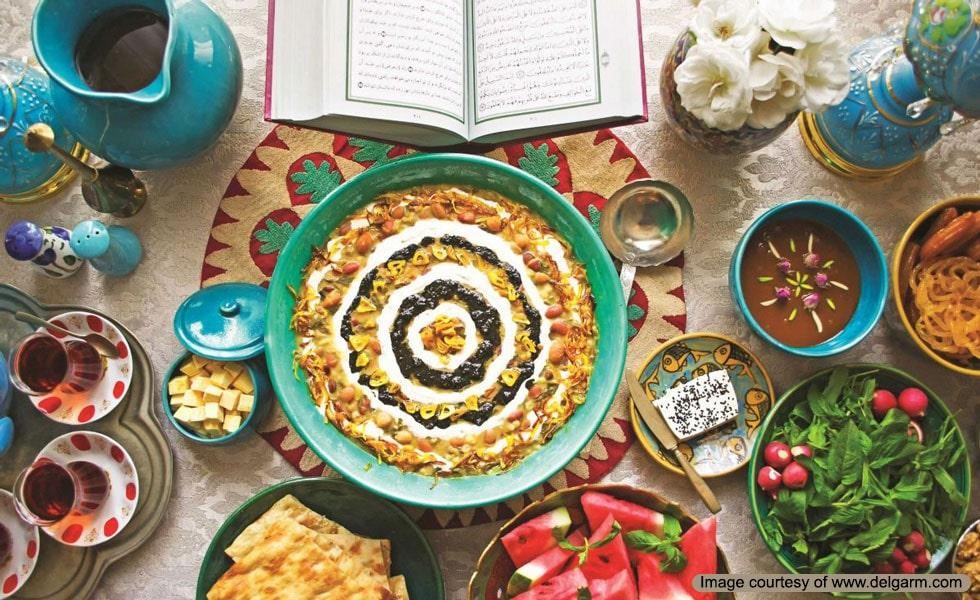
Iftar traditions are the socio-cultural and religious rituals that Iranians and all Muslims practice in celebration of the holy month of Ramadan. This ritual has become so famous that even non-Muslims are familiar with it. This has provided the ground for “Iftar and its socio-cultural traditions” to be recognized by UNESCO as the 23rd element of Iran’s intangible cultural heritage shared by Azerbaijan, Turkey, and Uzbekistan.
The process of global recognition of this ritual, which is considered one of the Iranian Traditions, took place in the Eighteenth session of the Intergovernmental Committee for the Safeguarding of the Intangible Cultural Heritage. This meeting was held in the city of Kasane in the Republic of Botswana (a country in the south of the African continent) and the case of Iftar/Eftari/Iftar/Iftor and its socio-cultural traditions was examined as an international joint case with the Islamic Republic of Iran, Azerbaijan, Turkey and Uzbekistan. The iftar ceremony has now been registered in the list of intangible cultural heritage of Iran by UNESCO.
Iftar Traditions in Iran
Before getting into this tradition, you may want to know the meaning of certain words:
- Suhur: It refers to the ceremonies including prayer, spiritual commitment to fasting, etc and eating before the whole daylight-period fasting of the following day.
- Iftar: It defines the similar ceremonies held after the sunset prayer call when the entire day is passed in fasting.
All Iranians recognize the holy month of Ramadan with the obligation of fasting and religious rituals such as the dawn prayer and the Rabbana prayer at the time of Iftar, the Iftar table, and such traditions. In this month of prayer, people who want to fast, wake up early before the morning prayer call and sit down at the Sahari table. After eating Suhur, Muslims perform the religious ritual of fasting and refrain from eating, drinking, and other actions that invalidate their fasting from dawn to dusk.
After that, the Iftar ceremony is held at sunset and after the Maghrib call to prayer, by families or in larger social groups. Usually, benefactors and elders hold the said ceremony in private or public places such as mosques, takiyas, bazaars, etc.
The traditional iftar ceremony is a unique socio-cultural activity that is practiced in all Islamic societies, regardless of gender, ethnicity, and race. One of the main goals of this ritual is to promote peace and friendship among people and to pay attention to the poor and those in need.
The Iranian iftar table is filled with all kinds of foods and snacks. Of course, today it is common to use modern dishes, but traditional Iranian dishes are still a large part of the Iftar traditions. Holding the Iftar ceremony and eating Sahari with the family during Ramadan is a part of Iranian culture that they remain steadfast in practicing.
Although the month of Ramadan is a shared concept among all Iranians, the specifics of the Iftar traditions vary in each city. This is a by-product of the culture of cities across Iran. Sometimes, some cities organize magnificent ceremonies that drive others to travel to that destination to participate in their ceremony.
As you know, the month of Ramadan begins after the month of Sha’ban and ends with Eid al-Fitr. On the morning of Eid al-Fitr, special prayers are held in mosques and fasting people pay the obligatory zakat to help the less fortunate.
The Time of Iftar
In the past, due to the lack of news media, people used other methods to tell the time for Suhur and Iftar; Including:
- knowing the stars and their exact location at different times;
- Lighting torches in high places of the city and the Minarets of the mosques;
- Listening to the sound of rooster crowing;
- Informing people by playing Naqareh, drums, and trumpets;
- Shouting in the alleys and…
After the time for breaking the fast is determined, the fasting Muslims prepare various food items and bring them to the table before the Iftar. Then, they recite special Iftar prayers and break their fast after hearing the call to prayer.
Traditionally, Muslims break their fast by eating a few dates and drinking a little boiling water or similar hot beverages. After that, they serve various foods such as bread and cheese, porridge, Sholezarad, Ash, soup, and traditional dishes based on the region.
Sometimes, after breaking the fast with a small meal, some people perform prayers and then eat their main meals.
How to Hold a Traditional Iftar Ceremony?
The iftar ceremony can be held by gathering family members around a table at home. Sometimes, this ceremony is held in larger proportions by inviting relatives and acquaintances to each other’s homes. It is customary to do this at the beginning of Ramadan and on the nights of Qadr (power) (the 19th, 21st, and 22nd of Ramadan).
Laylat al-Qadr (Night of Power) is the same night on which the Qur’an was revealed to the prophet, But its exact date is not known. For this reason, Muslims dedicate three nights to mourning Laylat Qadr and Ahya (staying vigil during the night). In addition, the 19th night of Ramadan coincides with the assassination of Hazrat Ali (AS), and the 21st was when he passed away as a martyr.
The iftar ceremony is held as a social event in mosques and public and private places.
Iranian Iftar Traditions in Mosques
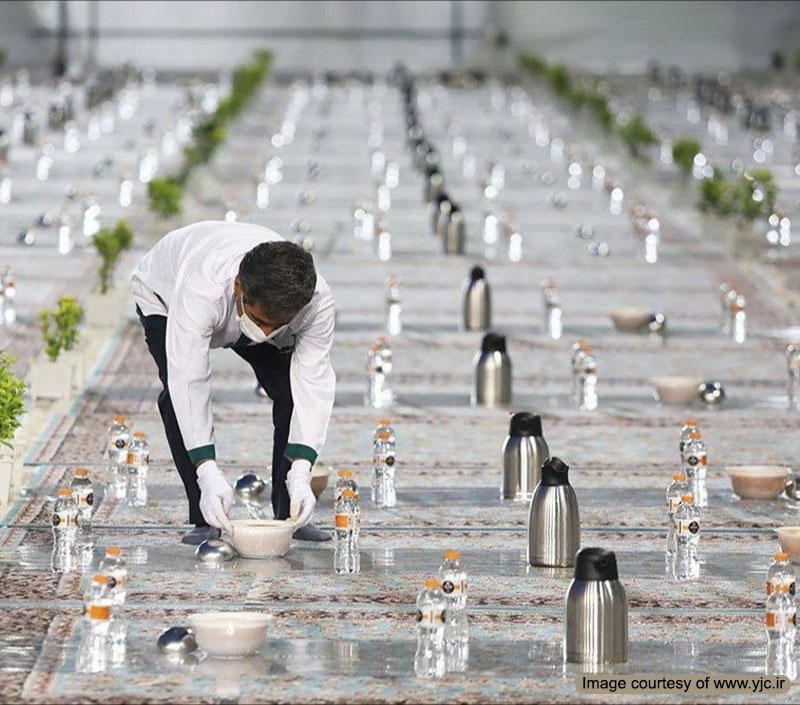
In many hadiths narrated about breaking fast, Muslims and especially fasting individuals are encouraged to observe this ritual in mosques. For example, the Prophet Mohammad (PBUH) has been quoted about the virtue of offering Iftar to others:
“Whoever presents Iftar meals to a fasting believer in the month of Ramadan, has a reward equal to freeing a slave in the eyes of God, and it will be a reason for his past sins to be forgiven.”
Such virtues and blessings of offering Iftar lead to iftar ceremonies in mosques held with the support of benefactors. In this way, the fasting Muslims of each neighborhood get to know each other and help solve each other’s problems through solidarity.
The presence of an iftar ceremony in mosques also makes Muslims more familiar with the principles of fasting and performing prayers at the right time. Recitation of the Quran in mosques is usually done regularly during the month of Ramadan, believed to double the reward of fasting.
Ramadan is known as the month of God’s feast and all people can benefit from the table that God has spread for His servants. Doing things like holding an Iftar ceremony, reciting the Qur’an, helping the poor, etc., helps more Muslims benefit from this blessed month.
How to Break Fast in Ramadan
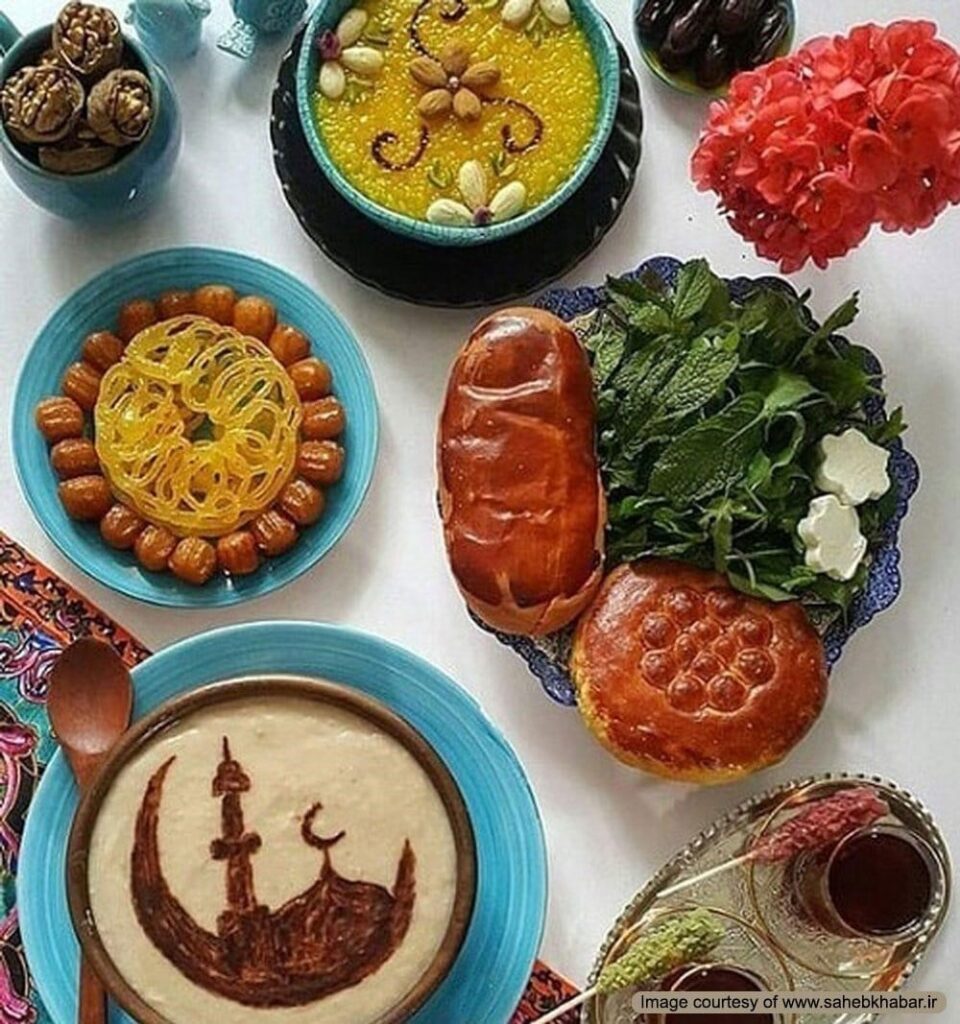
Iftar is the first meal that fasting Muslims eat after a long day of fasting. Therefore, choosing the right meal is important for maintaining their health during Ramadan. People should start breaking their fast with warm drinks, the best of which is hot water. Then, to meet the nutritional needs of the body, consume light and nutritious foods such as porridge, Sholezard, Halim, Ash, and soup. Eating starchy foods such as wheat, barley, and other types of bread is also recommended for fasting people.
It is important to note that the food consumed in the Iftar meal must be hot. Consuming cold foods may lead the abdominal and stomach muscles to spasm and cause pain and indigestion.
Among the other important food items that are essential in the iftar table are sweet foods such as dates, Zoolbia Bamieh (traditional Iranian sweets), raisins and the like. This is because after enduring a few hours of hunger, blood sugar levels have dropped drastically and many people feel a craving for sweets.
On the other hand, considering the body needs to be hydrated every day, drinking enough water during the night is mandatory for those who are fasting. This matter becomes more important if the month of Ramadan coincides with hot seasons.
Rehydrating the body cannot only be done by drinking beverages but also by consuming fresh fruits and vegetables that can rehydrate the body over time. For example, fruits such as apples, oranges, and watermelons have a lot of water. Tomatoes, cucumbers, lettuce, and broccoli are among the vegetables that, in addition to their nutritional benefits, can provide some water to the body during digestion.
Traditional Iranian Iftar Meals
Many Iranians usually prepare and eat simple meals for iftar to avoid eating dinner. They believe it is not healthy to eat large meals at night. Therefore, they save the main meal for Sahari at dawn. In the following, we introduce some simple and delicious traditional Iranian iftar meals:
- Bread, cheese, walnuts, and vegetable wrap, all kinds of Ashs and soups, all kinds of porridge, including rice porridge or wheat flour porridge, Sholezard, Shir Berenj (rice pudding), Halva, Dolma, meatballs, Kuku, Shami Kebab, cutlets, all kinds of salads and, all kinds of cold beverages like Rosewater and saffron syrup.
Learn More About Iranian Iftar Traditions
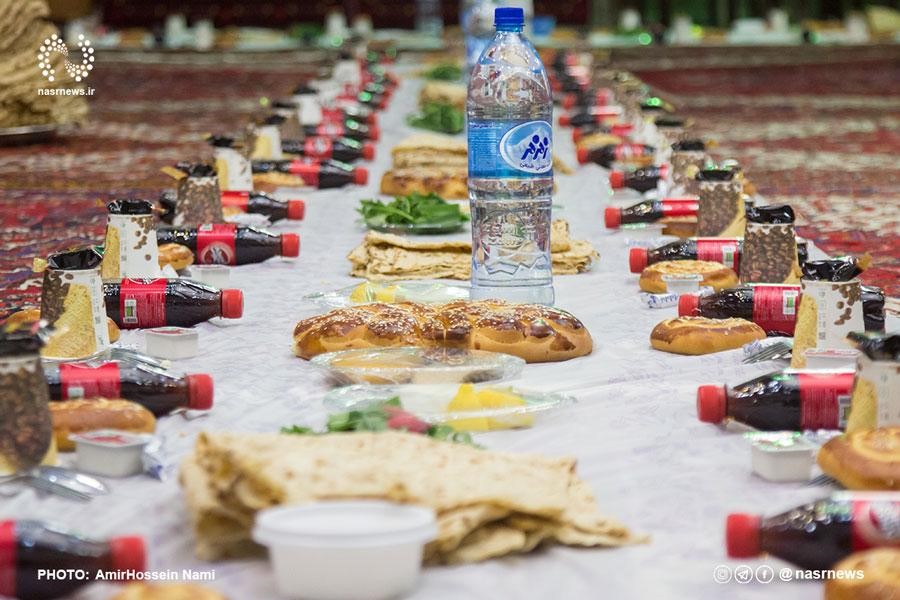
Hosting guests is a part of Iranian culture, which is held in a different light during the holy month of Ramadan by organizing the Iftar ceremony. Iranian Iftar tables are always full of colorful foods and dishes such as dates, Zoolbia Bamieh, bread, Fateer (unleavened bread), traditional Iranian Ash and soups, etc. to serve fasting friends and family. Of course, the purpose of Iftar traditions is not only eating food; Rather, it is the gathering of Muslims around a table and promoting unity, kindness, and empathy.
Frequently Asked Questions About Iftar Traditions
If you don’t find the answer to your question in the list below, share it with us in the comments section below this post. We will respond to it as soon as possible.
How were the iftar traditions introduced in the case submitted to UNESCO?
It is stated in this case that iftar traditions are practiced by Muslims of any age, gender, and race who recognize Islam as their religion and are passed from one generation to another. This ritual holds cultural significance for fasting and non-fasting people and is an integral part of their culture.
When is the iftar ceremony held?
During Ramadan, the ninth month of the lunar Islamic calendar, Muslims add fasting and special prayers to their other religious practices. In this month, they postpone eating and drinking to the time between the sunset and sunrise call to prayer, that is, from iftar to dawn.
Which food items are considered integral parts of the Iranian iftar traditions?
Various food items such as dates, bread, cheese and vegetable wrap, Zoolbia Bamieh, porridge, Sholezard, and the like are among the main foods included in Iranian iftar traditions.
What is the best food and drink to break the fast?
Boiling water and a few dates.



